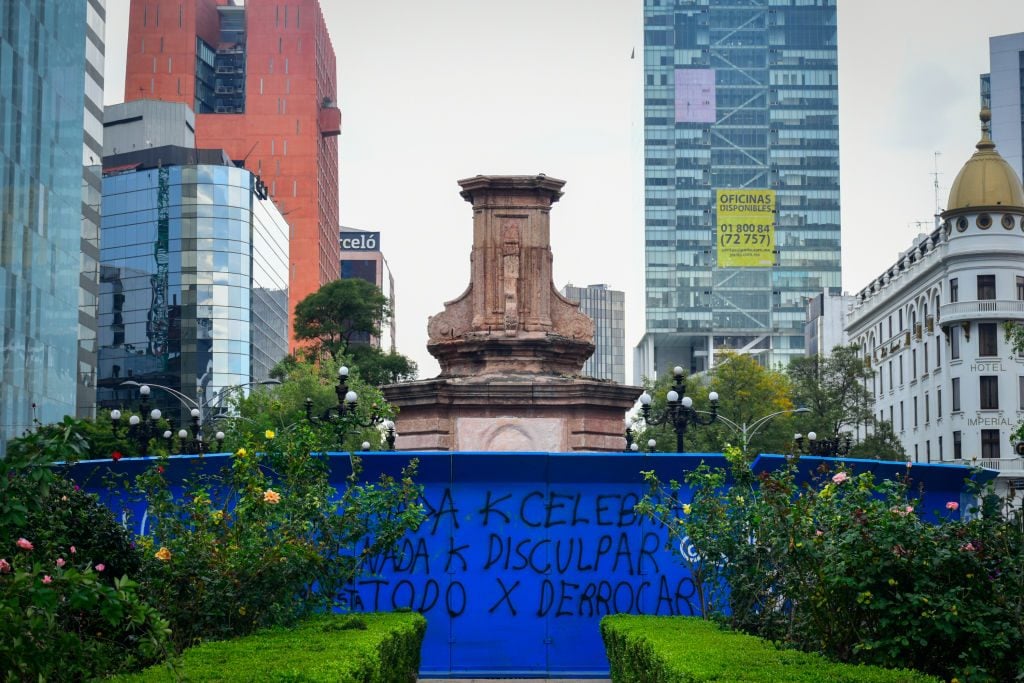Art World
Pedro Reyes Is Designing a Monument to Indigenous Women in Mexico City That Will Replace a 150-Year-Old Christopher Columbus Statue
“If someone can teach us how to take care of this planet, it is our native peoples," Reyes said.

“If someone can teach us how to take care of this planet, it is our native peoples," Reyes said.

Taylor Dafoe

A major monument to indigenous women is going up on one of Mexico City’s most prominent boulevards, permanently displacing a controversial statue of Christopher Columbus.
The new sculpture is being designed by Mexican artist Pedro Reyes and may even be ready by Dia de la Raza (“Day of the Race”) on October 12, a national holiday that honors the country’s hispanic heritage and coincides with the anniversary of Columbus’s arrival in North America.
The news was announced by Mexico mayor Claudia Sheinbaum this Sunday, September 5—a day that commemorates International Day of the Indigenous Woman.
“We owe it to them and we exist because of them,” Sheinbaum said during a press event. Indigenous women symbolize, she added, “the history of our country and our homeland.”
En el marco del #DíaInternacionalDeLaMujerIndígena anunciamos que en la glorieta donde se ubicaba la estatua de Colón, se colocará una escultura que reivindica a las mujeres, de cara a los #500AñosDeResistenciaIndígena.#CiudadDeDerechos pic.twitter.com/4CinthlvDY
— Gobierno CDMX (@GobCDMX) September 5, 2021
Last October, the nearly 150-year-old bronze monument to Columbus was removed from Mexico City’s Paseo de la Reforma, supposedly for cleaning. Many speculated, however, that it was taken down as a preventative measure in advance of Dia de la Raza—an occasion that has seen the sculpture to vandalized many times in previous years.
Moving forward, the statue, erected by French sculptor Charles Cordier in 1877, will be relocated to Parque América, a public plaza in Mexico City’s upscale Polanco district.
Titled Tlalli, the Nahuatl word for “land,” Reyes’s sculpture will depict a woman from the Olmec civilization, a group of Mesoamerican peoples who occupied present-day Mexico, dating from about 1400 BCE to 400 BCE.
“It is very important to dedicate a monument to indigenous women and to the earth, because if someone can teach us how to take care of this planet, it is our native peoples and that is precisely what we must learn again,” Reyes told Mexican news outlet El Universal.
“We all come from the land and we all return to it,” the artist continued, “and it is the land that should be in our mind—and not only in the past.”